Whether you think the culprit is an apathetic society, or zombies with a taste for city-dwellers, Alex Lukas’s work capture the desolation that grips some of America’s forgotten metropolises. Discussing his zine approach to art shows, Lukas leaves it up to you to find out which rock he sits on.
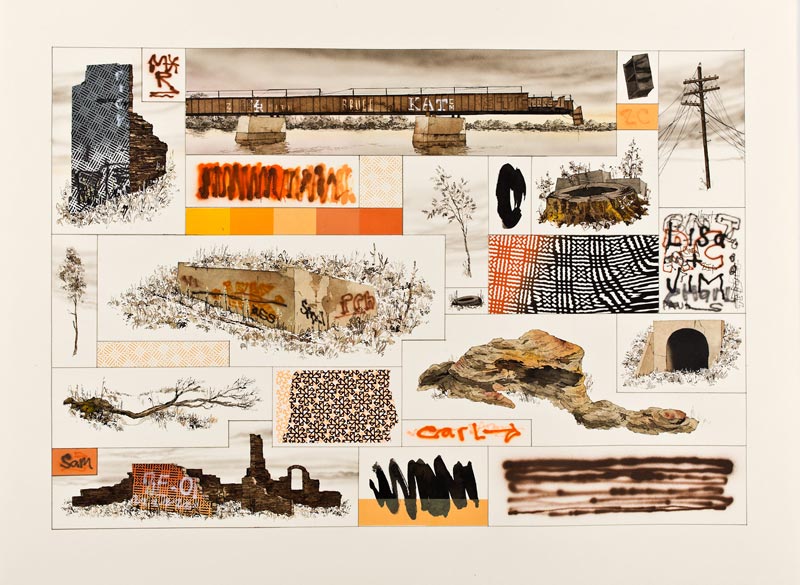

Untitled
22.25 x 30in
Ink, Acrylic, Gouache, Water and Screen Print on Paper
2013
Have you always wanted to be an artist? When did you know?
Yes. I don’t remember any revelatory moment as much as a series of occasions when I realized I’d probably be very unhappy pursuing anything else.
What was the art community like in Philadelphia, and what are you looking forward to now that you’ve moved to Chicago?
Philadelphia has a really wonderful tradition of artist-run and alternative spaces. A lot of my favorite Philadelphia artists have a strong foundation in zine making and screen printing. They espoused a DIY ethos that I was attracted to and excited to see in Philadelphia when I first visited in 2000/2001. After living there since 2007 it has really been awesome to watch those artists, those trends and those impulses evolve and mature.
I am excited that Chicago is a bigger city and to be in a new part of the country. I like traveling, so to have a whole new set of destinations within driving distance is great.
What draws you to printmaking and why do you enjoy this medium?
I think of printmaking, as I employ it, in two ways: printmaking as a means of producing a number copies of the same image and printmaking as a set of tools and techniques I employ to make one-of-a-kind works.
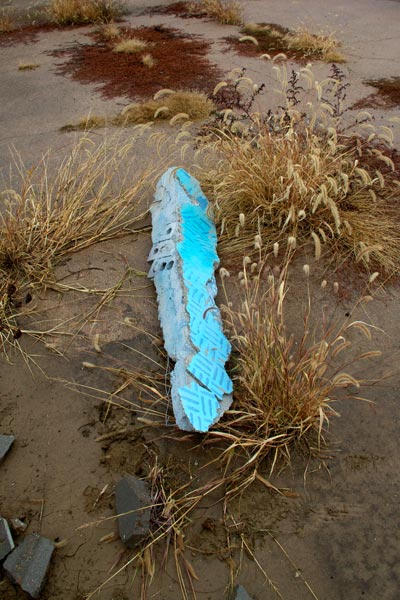

Untitled
72 x 10 x 10in
Double Layer Monotype on Concrete with Brick and Steel, Installed Outdoors
2013
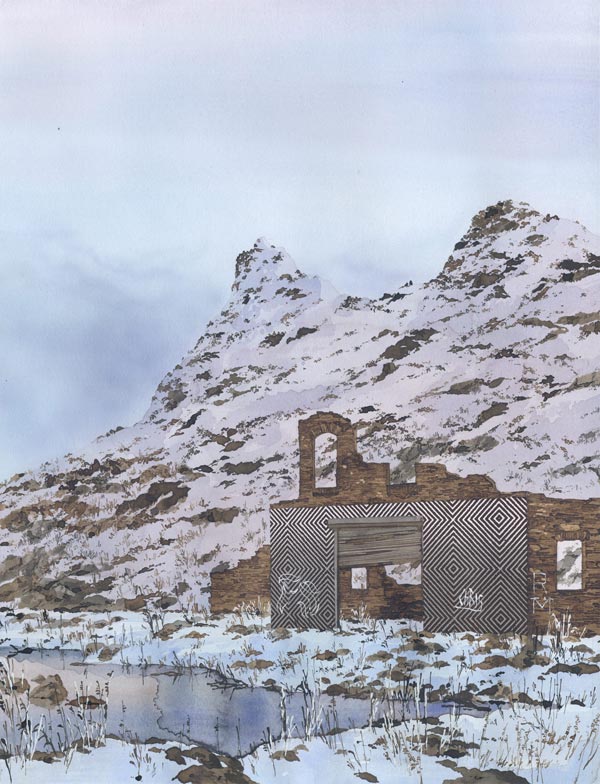

Untitled
14.5 x 11.5in
Ink, Acrylic, Gouache, Watercolor and Screen Print on Paper, Mounted on Panel
2013
Printmaking techniques are an integral, but small, part of how I make my drawings. I’ll screen print small sections of my drawings – normally patterns on a wall or advertising on a billboard. A lot of these screen-printed portions are unique and only used once because they are specifically designed to match the perspective of the landscape. I don’t really consider printmaking separate from the rest of my practice – it is only one tool of many I incorporate into my work. I try to choose how and where I use screen printing the same way I would choose where to use a pencil or a brush.
I also enjoy making things like books and prints that are produced in multiples. I’ve been making zines for years and I love both the challenges of making something that is distributable as well as the idea that a print can (and should) be considered as an original work, not just a reproduction of a painting. At the same time, it can be much less precious as an object because there is more than one copy. I think that is really liberating. Also interacting with a book is inherently a very different experience than looking at a painting or walking through an installation. I like those differences and I try to capitalize on that unique viewing experience that is inherent to books.
I’ve been making zines for years and I love both the challenges of making something that is distributable as well as the idea that a print can (and should) be considered as an original work…


Untitled
8.6 x 13.75in
Ink, Acrylic, Gouache, Spray Paint and Screen Print on Book Page
2013
Your work is a massive cross-pollination of ideas and methods. How much planning is involved?
Especially with the larger landscape drawings there is a ton of planning and sketching involved. For anything over about 6 feet in length I usually start with a very small compositional sketch in my sketchbook, then I work up a 1/8th scale (or something like that) full-color sketch, which I’ll overlay with a grid that I use to help scale-up the composition to its final size.
There’s a series of drawings I’ve been working on for about a year that are compositionally broken up into many small sections that are loosely inspired by 19th century etchings and lithographs. I’ve been approaching these drawings with much less of a plan for how the final work will look and it’s been a nice and different way of working.
I’ve also recently been letting my zines develop much more organically. I used to design and plan a whole book ahead of time but more recently I’ve been designing and printing them in sections. I’ll totally finish a set of pages – conception to print – and then begin the design on other pages. I’ve got about two or three in progress right now with finished various signatures sitting in piles in my studio.
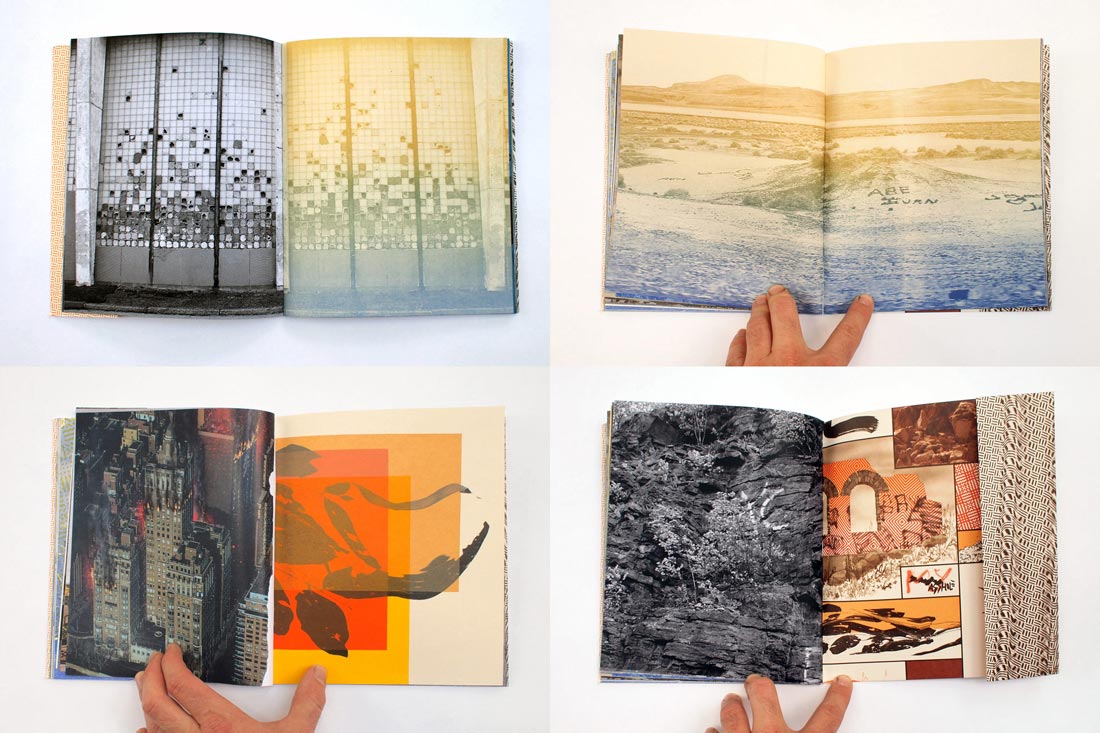

RTMA
Artist’s Book, 72 Pages
8.5 x 7.25in
Screen Print, Photocopy, Diazotype
2013


ANFX
Artist’s Book, 52 Pages
8.25″ x 5.75″
Screen Print, Photocopy, Risograph
2014
What is the importance of zines, and what makes a good one?
I was talking a little before about how a book is viewed differently than a drawing or painting hanging on a wall. I think it is a much more intimate and tactile experience. It also can happen in the viewer’s own space – like in a living room or on the bus as opposed to in a gallery setting. A zine compacts so many images into one object. Usually I experiment with a few ideas or motifs in each zine. There is something important about getting an idea out there and then seeing if it retains my interest. I’ve found if I just sit on an image I get paralyzed and sometimes lose distance as to whether it is good or bad or even if I like it or not. If that image or idea is out there in the world it takes a lot of the pressure off and I’m more readily able to decide if it is something I want to pursue more or set aside. Because people are viewing the zine in their own space, I think they are more open to receive these experiments.
What goes into making a zine?
I’ve got a ton of folders on my computer where I separate my photographs into categories and then I’ll start to sort of organically organize and order those images into something that eventually becomes a zine. I’ll do most of the layout on the computer. Then comes the printing. Some of the pages are photocopied, some are screen printed, some are offset or printed on a risograph, some are cut down diazotypes, some things are collaged. The printing is really the labor-intensive part. I do most of it myself, but I’ve been lucky to work closely with a few printers recently, especially for the offset portions. Eventually everything gets folded and bound and trimmed and distributed. Waiting in line at the post office to send out orders is the final and least fun part.
I’ve found if I just sit on an image I get paralyzed and sometimes lose distance as to whether it is good or bad or even if I like it or not.




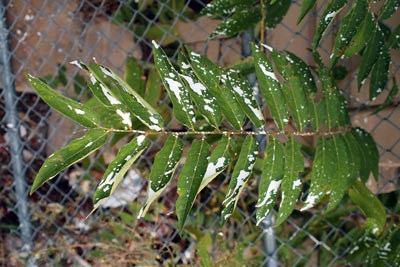

Various Reference Photos
2012-2013
Do you travel just to take reference photos, or do you take reference photos while you travel?
Both. I love finding things to photograph while en route somewhere, but I also love meandering or following my nose or going somewhere I suspect will be interesting.
What’s the significance of these reference photos, what kinds of places do you look for to shoot?
I’ve developed a pretty good nose for where high school kids go to get stoned and mess around with spray paint. Basically an in-between area, any space that is off the beaten path and not necessarily designed for use but where people congregate none the less. Spaces like underneath bridges and by swimming holes tend to be interesting.
What has the experience been like to break down the categorized/compartmentalized aspects of your work, like introducing reference photos into your final pieces and zines?
The last few shows I’ve done I’ve tried to treat more like a zine, incorporating prints, photographs and objects in addition to my drawings. For years I was stubborn and would only present certain things in a gallery setting. I don’t know where I got the idea that the compartmentalization was a good idea, but I realized I spend a lot of time on things other than the finished drawings. It stopped making sense to exclude from shows the photographs and prints and other things I make.
What other areas do you collect source material from?
The patterns come from security envelopes. I’ll distort these patterns on a photocopier or scanner and then screen print them into my drawings, generally as geometric murals on dilapidated walls. I also collect old coffee table books with aerial photos of American cities. I’ll tear out pages to print and paint over. There is a unique quality to offset printing from the 70s and 80s that shows up in a lot of these books.
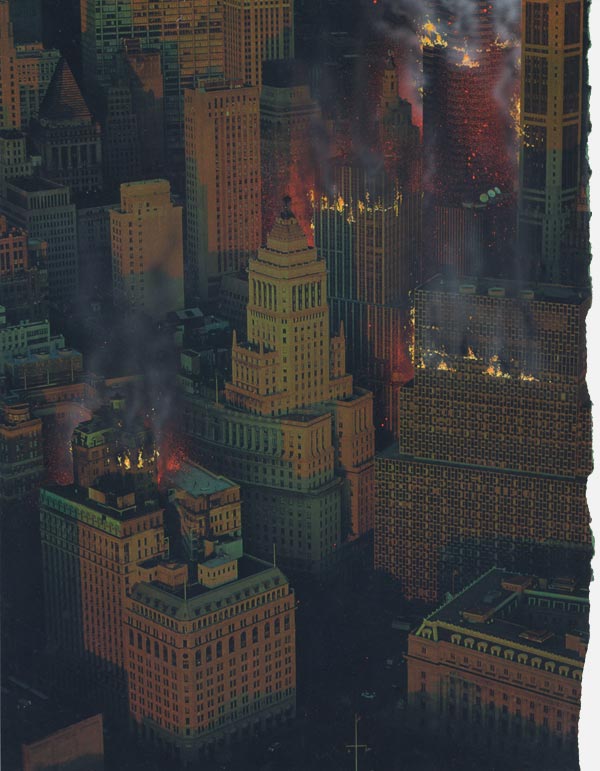

Untitled
13.75 x 11.6in
Acrylic, Gouache, Spray Paint and Screen Print on Book Page
2013
There is an interesting balance of narrative and lack of narrative in your work. Is this a conscious decision?
Yes, it’s very intentional. The example I give sometimes is this rock under a bridge in suburban Philadelphia. Someone wrote in white spray paint “Sean’s Seat” on this rock. As a viewer coming across it, you know a simple set of facts – Sean sat here – and you’re sharing with Sean the experience of being underneath that bridge, but past that, the story is wide open. I have my idea of who Sean is and why he was there, but it might be completely different than someone else’s who comes across the same writing and thus is presented with the same facts. And both imagined scenarios about what actually happened when Sean sat on the rock, are clearly different. Presenting that type of very open-ended scenario is what I try to do with my drawings.
You’ve said you don’t really like your work considered post-apocalyptic, despite getting this reaction a lot. In a world where this imagery is very much at the surface of pop culture, how do you differentiate yourself?
I think this relates to your previous question about what type of narrative context the work is put in. It’s so interesting to me how much this type of “post-apocalyptic” pop culture narrative focuses on “what happened.” It ends up being some zombie pandemic or climate-times-ten or whatever. But as much as I get the post-apocalyptic reaction I also get the reaction that the work looks like contemporary Camden, NJ or St. Louis or Detroit or Philadelphia. With these cities the “what happened” is much less a fictitious attack of the un-dead as it is a slow, steady failure of society.
I try to make my drawings quiet. There is no screaming, no explosions, no definitive moment in time. That quietness, that solitude, that act of questioning of “how this happened” without the didactic “what” is interesting to me.
With these cities the “what happened” is much less a fictitious attack of the un-dead as it is a slow, steady failure of society.
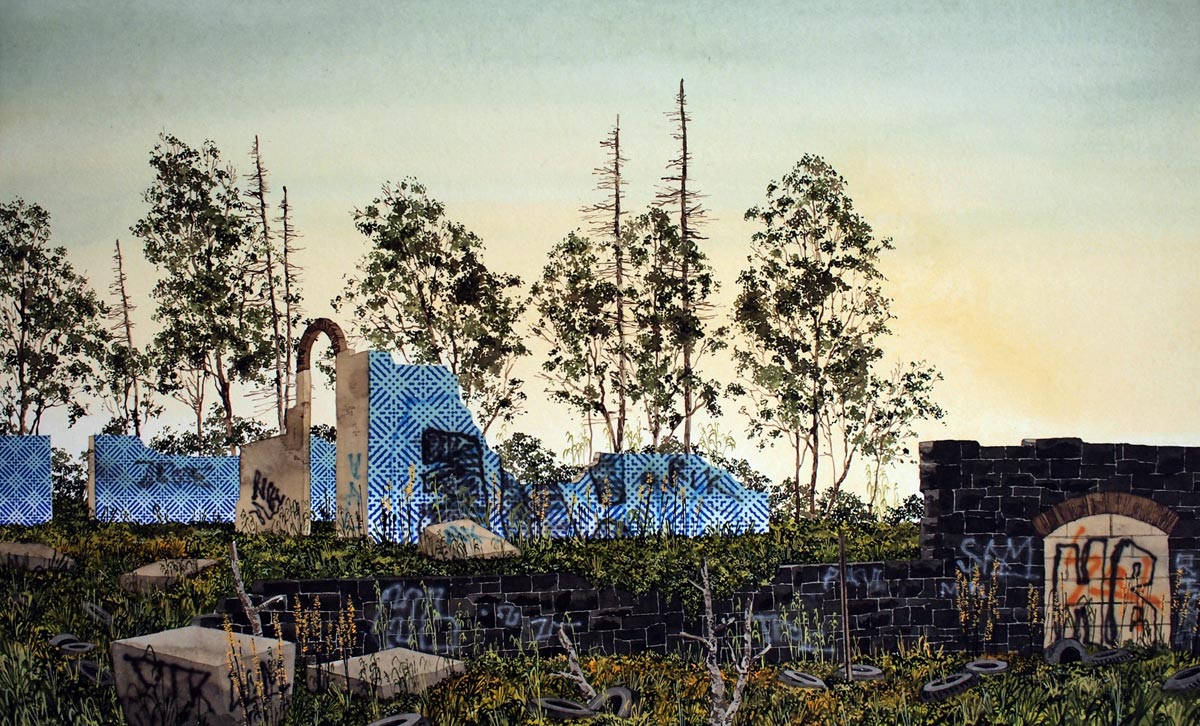

Untitled
20.5 x 12.5in
Ink, Acrylic, Gouache, Watercolor and Screen Print on Paper, Mounted on Panel
2013
Where do you see your work going?
I am currently working on a series of concrete sculptures that are loosely inspired by observed forms. The sculptures employ a monotype process that I developed based off of the patterns I use in my drawings.
What accomplishment are you most proud of?
Supporting myself with art or art-related activities for the past six years or so.
What do you hope is different in your life at this time next year?
This has been my first winter in Chicago. I hope next year I won’t have lost track of the times we’ve experienced a “polar vortex.”
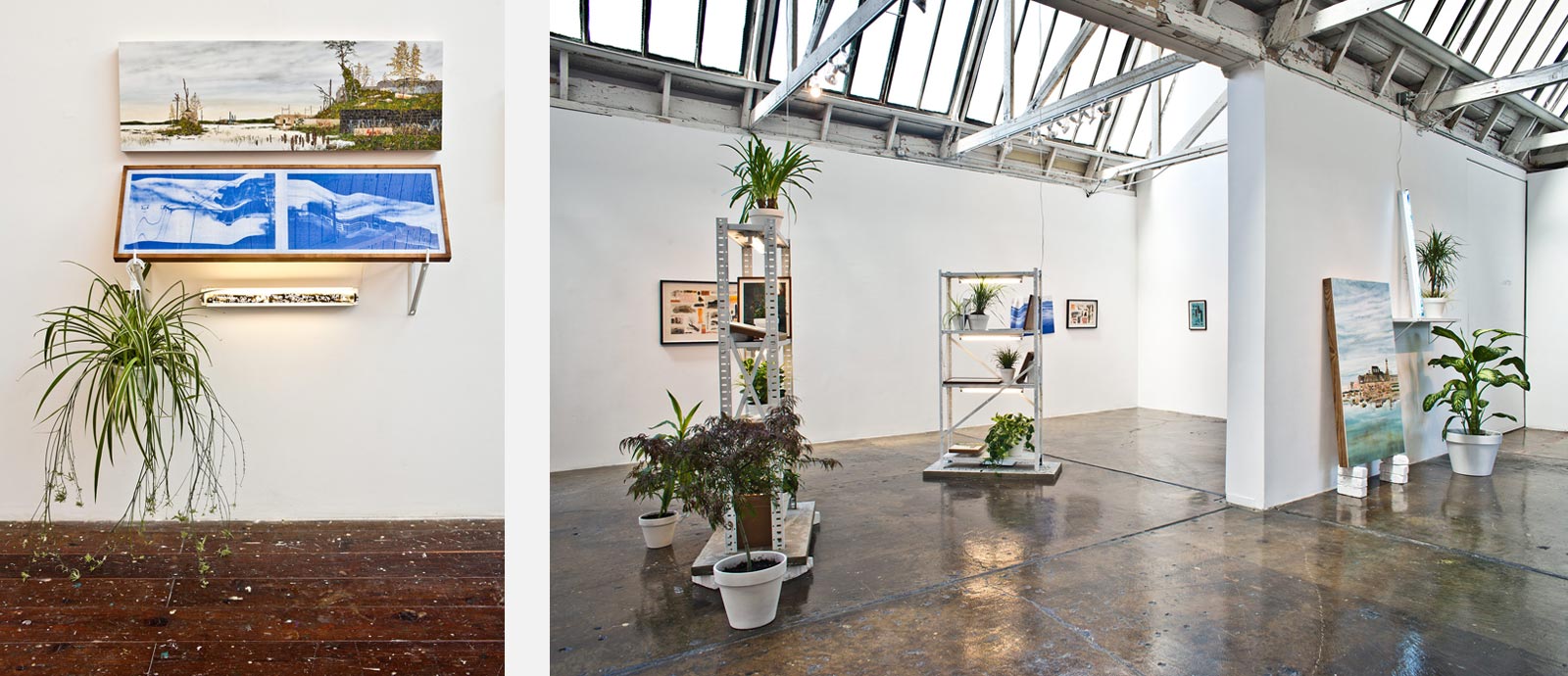

Untitled, Mixed Media, Spray Paint on Flourescent Light, Potted Plants and Shelving Brackets, 2012
Installation View, Alex Lukas at Guerrero Gallery, San Francisco, May 2013